11 Easy Tips and Tricks to Up Your Mobile Photography Game
Smartphones can be seriously powerful photography tools, here’s how to make the most of your phone camera!
For the first 3 years of running Yoga, Wine & Travel I didn’t use or own a DSLR, point-and-shoot or mirrorless camera. For the longest time prior to investing in my DSLR it was just up to me and my trusty 8 megapixel iPhone 6 to capture photos of my travels and yoga journey. I’m here to tell you that, especially these days, you can rely on your smartphone to take breathtaking photos that you can look back on for years to come! And much of the time, you simply can’t beat the portability and maneuverability of a smartphone.

Up until about 2015, I didn’t always take photos while traveling, it just wasn’t something I was used to doing. In the past, my phone’s camera roll was full of overexposed and sometimes blurry shots, accidental floor snaps (you know what I’m talking about) and I haven’t (and will never) master the “art” of the selfie. Gradually learning to document my travels through photography has, in a way, changed the experience of traveling. I now think more critically about composition and framing shots, leading lines and most importantly, the practice of taking travel photos has driven me to become more observant of what’s around me and keep my eye out for interesting details.
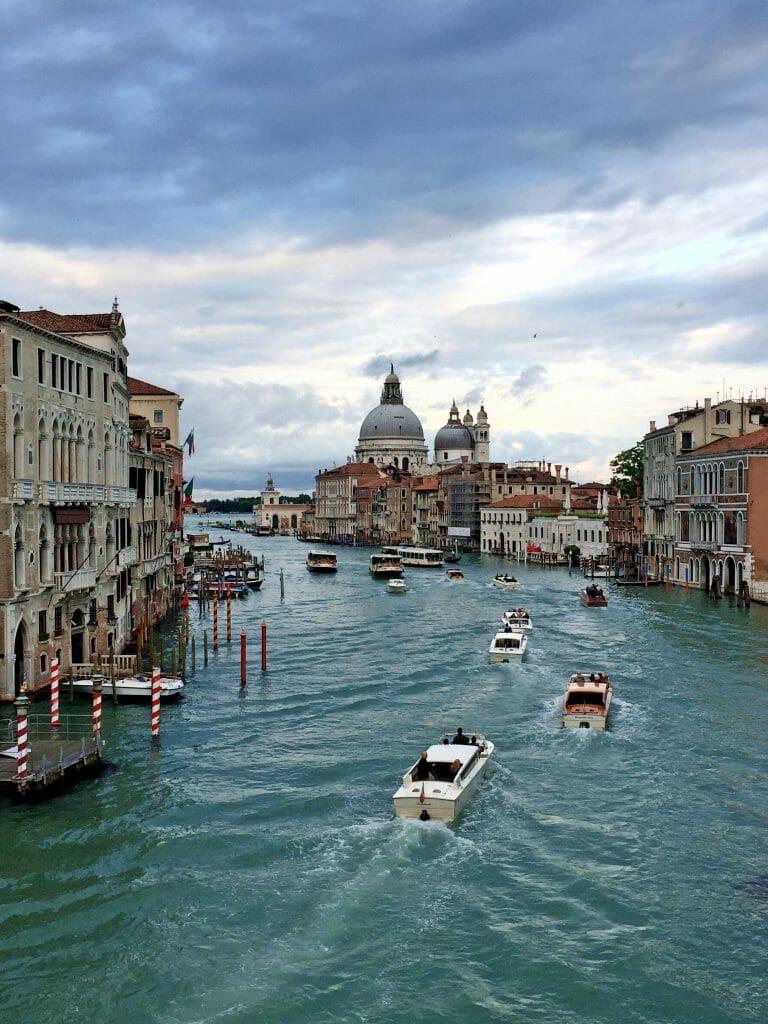
If you also rely on your smartphone for travel photography, fear not! My photography skills are still not quite where I want them to be, but here are some easy mobile photography tips and tricks that I’ve picked up along the way that have helped me to take (and edit) better photos with my phone, I hope you find these useful!
1. Make sure your lens is clean
No, this is not a cop out tip! Our phones are often in our pockets, bags or hands and the camera lens often gets dirty and greasy without us even realizing it. I can’t even tell you the number of times I’ve taken photos at the beach, only to find out I smeared sunscreen all over the lens so every shot came out blurry: devastating. These days I maniacally wipe my lens down in between shots with whatever I can get my hands on: my shirt, a tissue, my boyfriend’s shirt…the list goes on.
2. Use natural lighting and shoot away from the sun

This is especially true for smartphone photography and unfortunately shooting into the light often results in photos coming out overexposed or too dark. To adjust focus and exposure, tap your screen and slide your finger up to increase exposure, down to darken. You can also hold your finger down to “lock” the settings. If you’re not happy with how the photo is turning out, try using the HDR function.
HDR works by balancing the shadows and highlights of a photo but doesn’t always work 100%. Read these posts for more on when to use HDR (and when not to): here and here.
3. Avoid zooming in
Photos taken with digital zoom tend to be much much grainier, though these days phone cameras are getting more and more sophisticated with optical zoom. So instead of relying on the zoom function, move closer to snap your picture (without falling off a cliff) and you can always crop the image later. Even if you have access to any smartphone after the iPhone 7 Plus that offers optical zoom (instead of digital zoom), I’d recommend avoiding this function unless you absolutely have to – even the latest and greatest iPhone 14 Pro only offers 3x optical zoom, any zoom beyond this is digital. Here are the differences between optical zoom versus digital zoom.
4. Consider your composition: framing, rule of thirds, leading lines
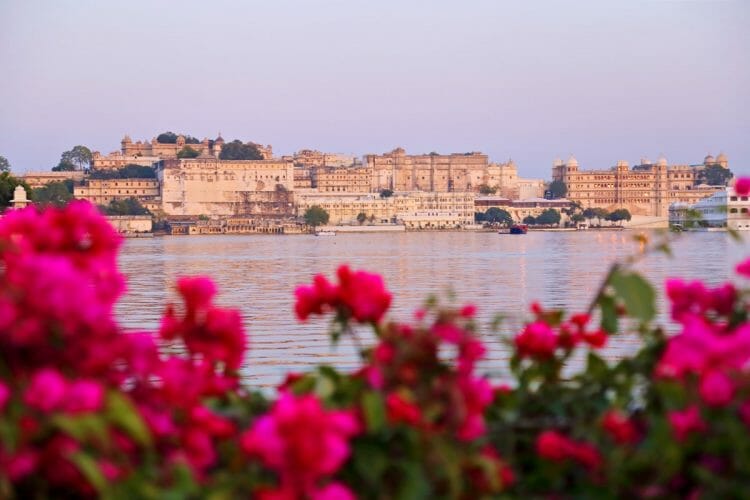
Framing is a technique to draw attention to the main subject of the photo by using something around the edge of the photo to block parts of it. It can help to create some depth and can help to make your photo more visually interesting.

Look around for flowers, bushes, trees, windows – you get the point! Here is framing in action in Venice at the Bridge of Sighs.
The “rule of thirds” helps to balance out the composition of the photo and the idea is that an off-centre composition looks more natural and creates a more visually “interesting” photo.
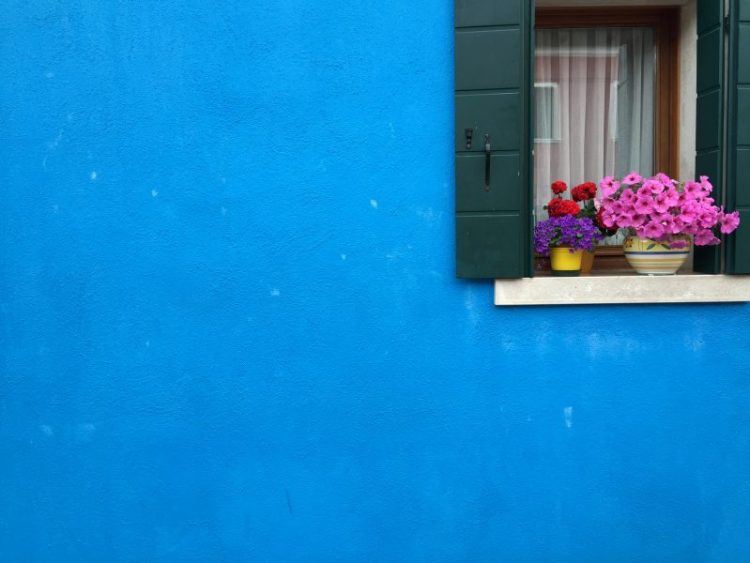
This is a great article illustrating the rule in action. Here is one of my easiest smartphone photography tricks: to help you execute the rule of thirds turn on your phone’s grid setting. For iPhones, go to Settings – Camera – and then flip the switch to turn the Grid on.

Leading lines is a technique used to help to draw the viewers eye to the main focus of the photo. Leading lines can be found in tons of places: roads, stairs, alleyways, rivers, the list goes on!
Here’s another example of the leading lines technique being applied to a yoga photography shot:
5. Take the same shot in both landscape and portrait format
The same shot can look very different in both orientations, and if you know you probably won’t revisit that particular spot or get to take the same shot again, you’ll want to take a few photos in landscape and portrait format.

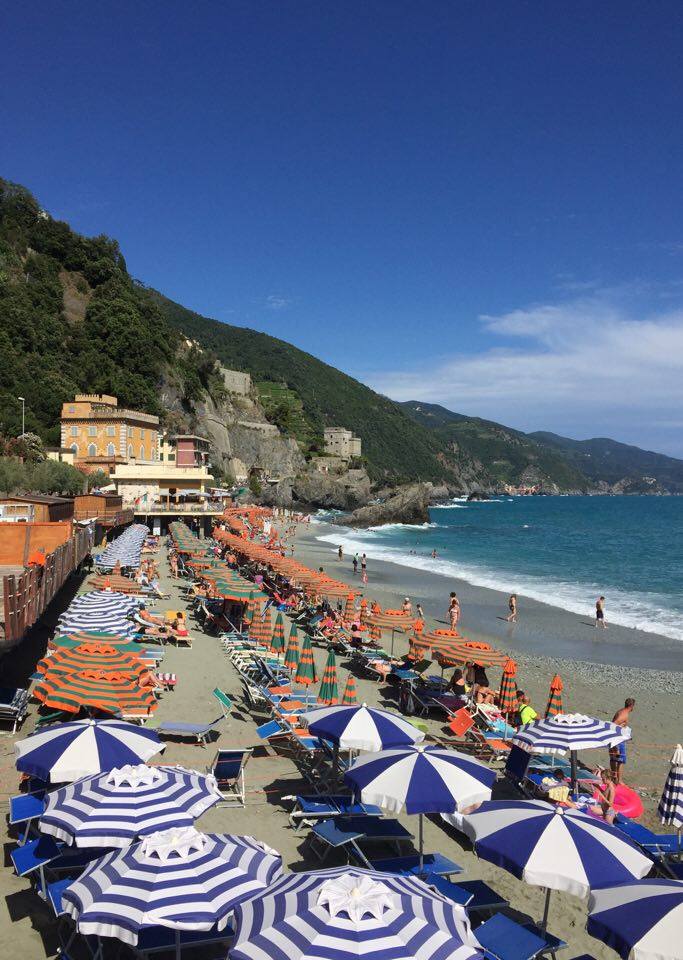
You can always decide which ones you want to keep afterwards! Here is an example, both photos were taken a second or two apart and I haven’t edited either photo so you can focus on the difference in orientation.
6. Be on the lookout for interesting details

A shot doesn’t have to be busy for it to be captivating. This shot remains one of my all-time favorites but its beauty is in its simplicity and tones.
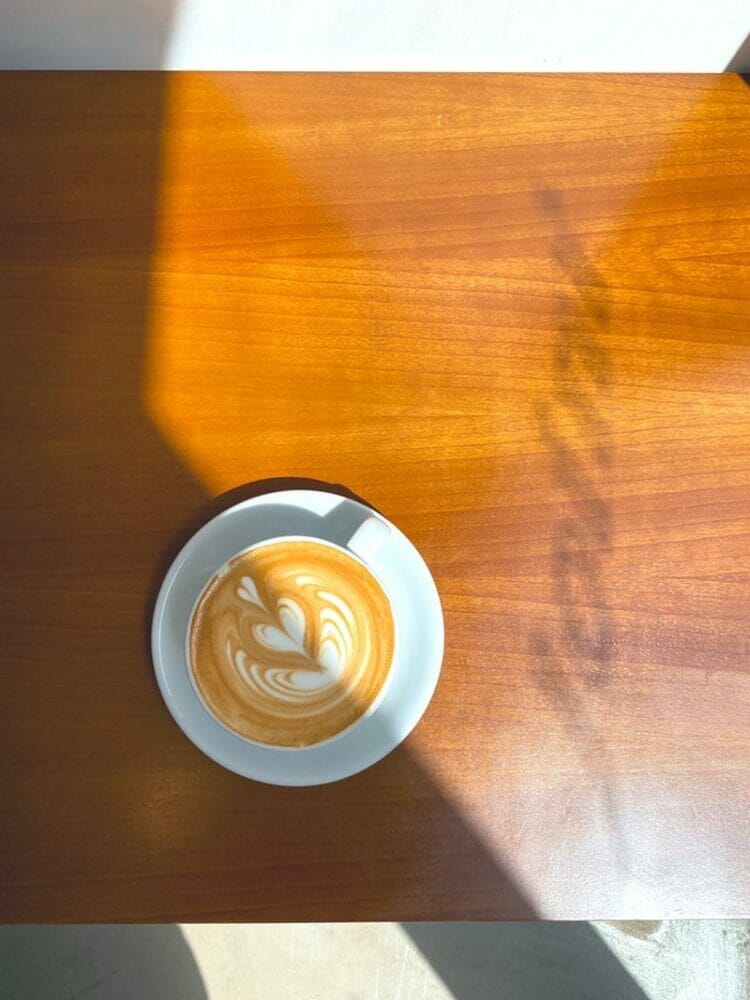
You can also be on the lookout for interesting shadows and contrast – you’ll be surprised how many different ways you can frame the exact same shot!
7. Check your screen brightness levels
Sometimes I’ll forget that my screen brightness is super dim, and edit a photo so much that it’s way too bright or way too saturated. Or, I won’t edit a dark photo enough because my screen is really bright – you get the picture (har har – I’ve always been a fan of a good pun). When you’re editing (and before you post), make sure you’re happy with the photo at any brightness setting!
8. Correct the perspective

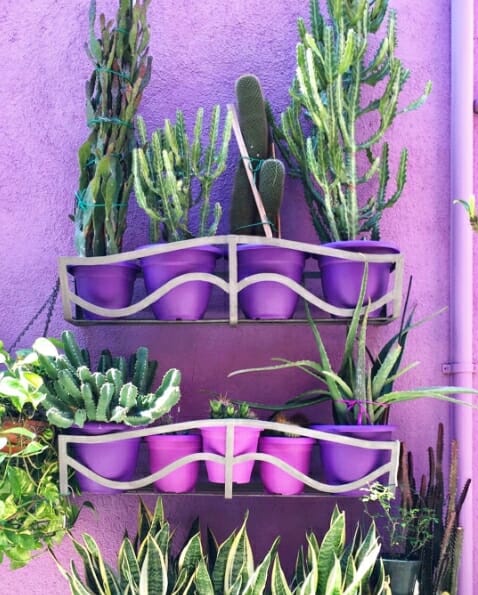
So you’ve taken a photo and it kind of looks a little off because it was taken from too high up or too low down, or too slanted from the left or right. You can fix minor slant issues with the “adjust” function in Instagram or other photo-editing apps and tools. Here’s a useful article to read on the perspective function, and here’s an example of how I used function to “un-tilt” this photo that was taken from a lower angle. Pay attention to the pipe on the right to see the difference it makes.
While you’re at it, make sure that your photo is level and straight, especially if you’re capturing a photo that includes the horizon – you’d be surprised how much of a difference rotating your photo by 0.5 degrees can make!
9. Get rid of unwanted elements from your shot

Touch Retouch is a seriously incredible app ($1.99 in the Apple app store) that lets you remove unwanted objects from your photos. I’ve found that it works best when you’re removing objects or people from photos of water or more solid backgrounds. Don’t ask me how it works, but it’s pure magic and one of my top phone camera tips for beginners.

Here’s an extreme example of how I used it to remove a bunch of people and a no-swim barrier from a photo of the Skradinski Buk in Krka National Park. I’ve also used it to remove birds, rubbish bins and other random things from my shots.

However, you might also want to consider that is the “busy” elements of a photo that make it interesting and bring more life to the photo. For example, these umbrellas on a beach in the Algarve, in my opinion, makes the photo more colourful and vibrant!
10. Leverage good editing apps
There are a ton of great photo-editing mobile apps out there. My favorites are Afterlight and A Colour Story. Some other popular apps include VSCO and Lightroom. Instagram’s in-app editor, while not perfect, is pretty good for photos that don’t need much editing. The lux feature (tap the sun icon at the top of the screen) is a good way to slightly up the vibrancy of photos and balance out some dark spots.
11. Make your phone work for you
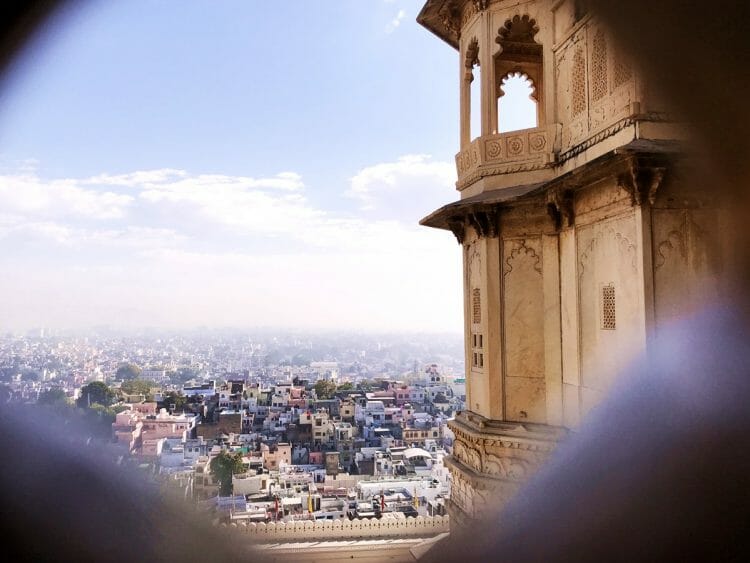
This is one of the best mobile photography tips: as a professional photographer friend wisely reminded me, take advantage of the fact that your phone is a small and light device and use it to find new angles – check out some of Fabio’s professional photos here! Your phone’s camera lens can get where some professional cameras cannot. For example, this photo looking down Giotto’s Campanile in Florence was taken by sticking my phone’s camera lens through steel grating, or the photo above of Udaipur from the City Palace.
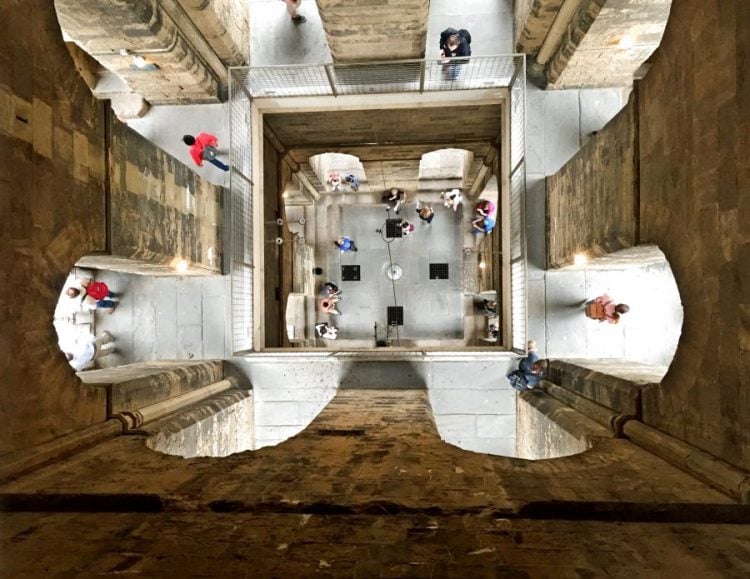
That’s it! I hope these tips and tricks help you to take better photos with your phone. What are some other good tips you have up your sleeve? Share them with me in the comments section below!
Enjoyed this guide? You might also like these reads:
- You don’t need to master any complicated software to edit your photos. Here are some of my favorite easy photo editing programs
- For even more travel tips check out this list of essential travel tips and tricks
Want to see more of my travel and yoga photos? Follow me on Instagram!
Pin this for later
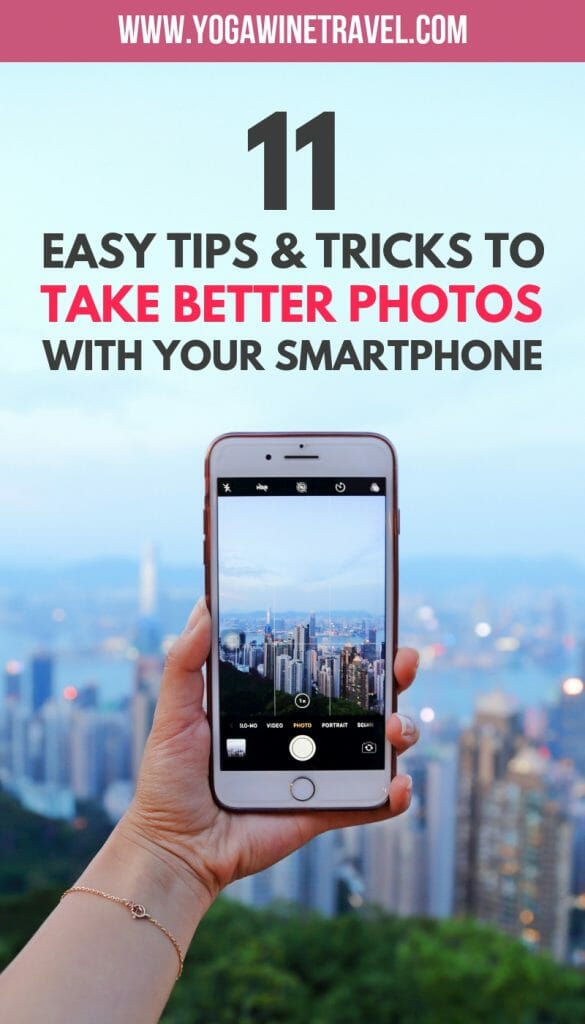
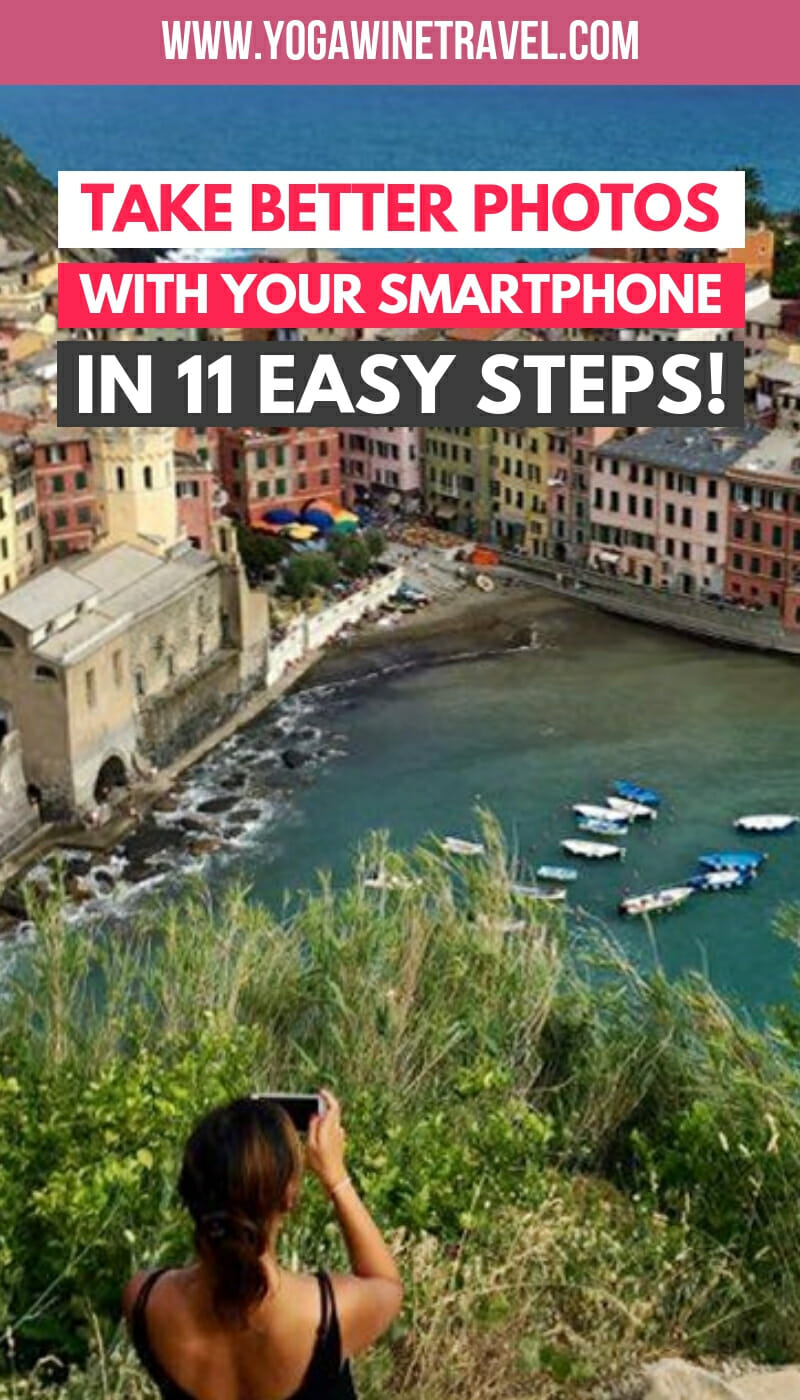
Enjoyed reading this article? Subscribe to the mailing list!
* Unsubscribe at any time. Your e-mail address will only ever be used to send the occasional Yoga, Wine & Travel newsletter.

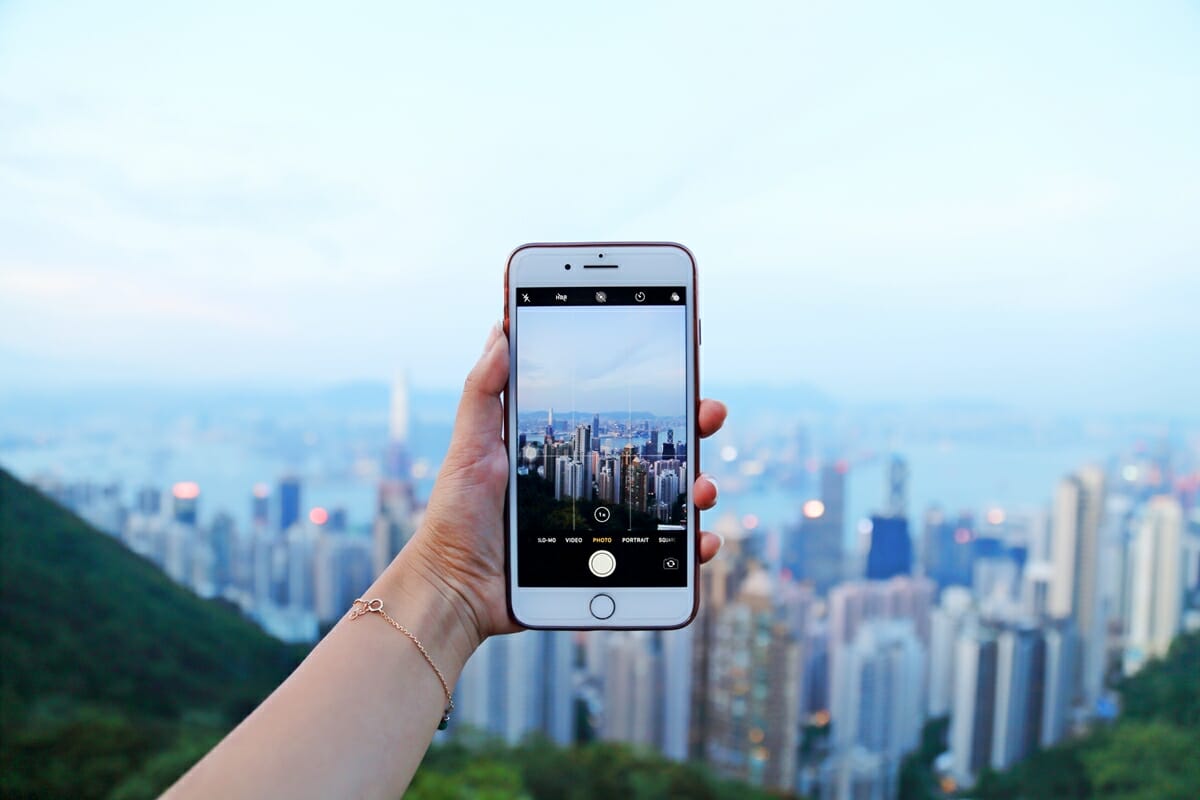

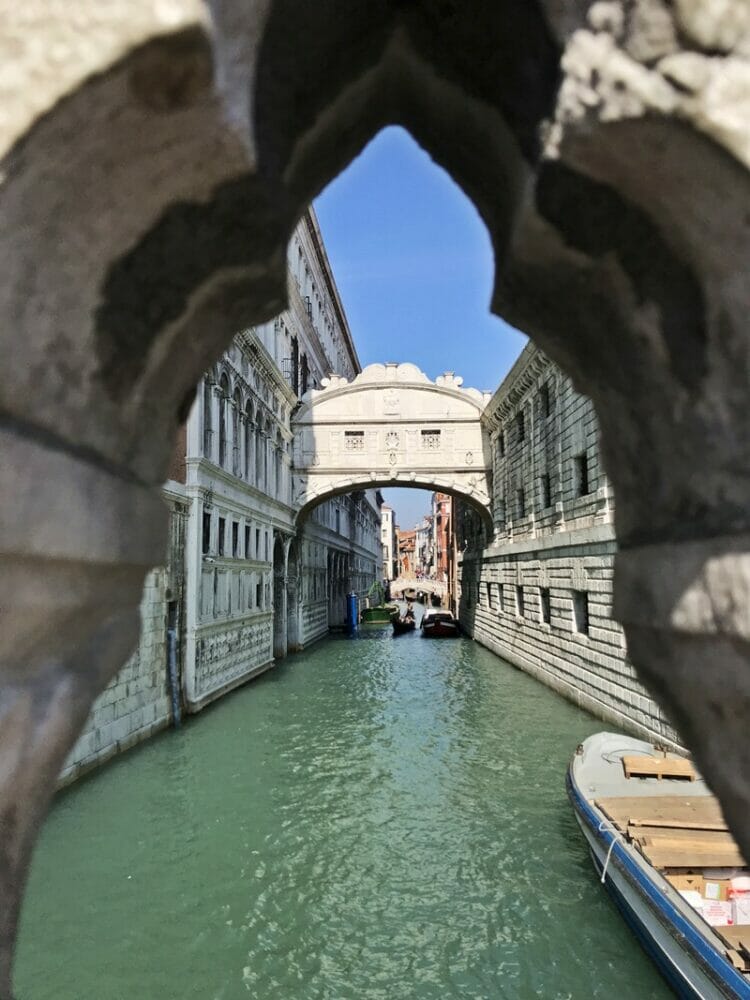


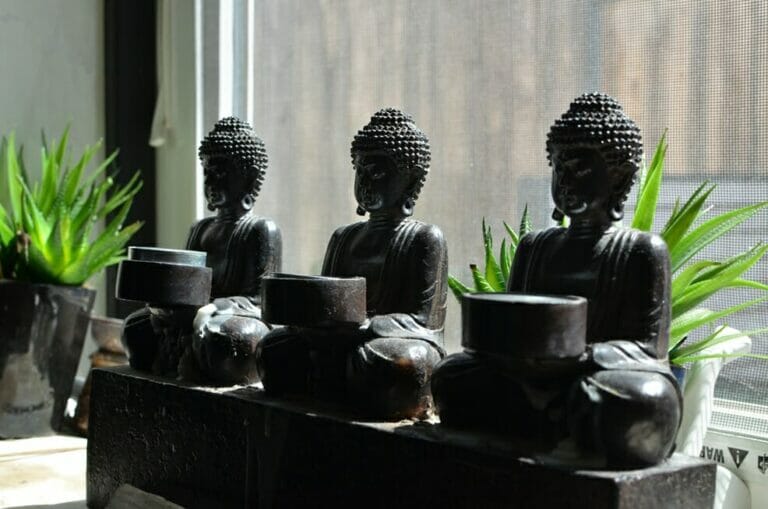




Good day! Great tips, can I use your resources in my class as a reference?
Hi Carrie,
Thanks for your comment. Can you please send me an e-mail to discuss the format in which you are hoping to repurpose this content? flo [at] yogawinetravel.com
Cheers,
Flo
Absolutely wonderful article. People like who doesn’t own dslr or high end camera, use only phone will really get help.
Thanks for taking the time to read this!
Awesome article and great tips on what apps I should be using 🙂
Thanks for taking the time to read this, Megan! Hope you found the article useful.
Awesome tips – thanks so much Flo. I’m a little way off buying a camera and have been wanting to improve my phone camera skills so these tips are perfect!
I’m so glad you found these tips helpful, Monika! I love my trusty iPhone 7 Plus – the camera is great!
I love all the tips that you included here! You can really take amazing photos with your phone, you just have to know how! Noted on the zooming in. I tend to make that mistake sometimes. 🙂
The iPhone 7 Plus now offers optical zoom! However I find that the you are still better off either getting closer or taking the photo with no zoom, then cropping in an editing program.
These are all great tips, especially the first one which seems like common sense but many people forget to check.
Exactly, and then it’s too late when you get home!
Such great tips!! I just have my smartphone camera that I use on my travels, too! I’ve been able to capture some really great shots. I also sometimes just point and shoot and hope for the best haha.
Haha I’m upgrading to the iPhone 7 plus because it’s supposed to have a better camera! Thanks for reading this, Samantha!
These are some awesome tips. Especially the one with screen brightness; I’m so bad at remembering I always have my screen turned way down!! It’s funny because I’m the opposite of you, give me a camera and I feel far more comfortable then with my phone. Something to be said about limiting yourself to make yourself grow. Maybe on my next trip I’ll leave my camera at home… well maybe for only a half day!
I wish I knew how to maneuver a camera like you, Ashley! I think the benefit of a phone is really portability and the ability to get into different spaces. I’m upgrading to the iPhone 7 Plus soon so I’ll keep you posted on how that goes!
What!??!?!?! Can’t believe you took all these photos on a phone, they are absolutely beautiful!!!!! Tip #5 is my favorite. I myself always get stuck taking photos in portrait format that I forget landscape may be more suitable. And that Touch Retouch app looks amazing, definitely need to download it on my phone ASAP. Thanks for the great tips!
Jasmine,
http://www.mysuitcasejourneys.com
Jasmine, thanks so much for taking the time to read this! So glad you found some of these helpful 🙂 Let me know how you go with the app!
Great tips! I always end up taking some of my travel pictures on my phone as well as my camera – it comes with juggling kids while travelling! I’ve not heard of the Touch Retouch app before – that’s epic! #flyawayfriday
Hope you’re having fun with the Touch Retouch app!
I know I already left a message here but I just love the post, I’m so glad you shared it on the linkup! We really appreciate you joining! Hopefully we’ll see you next week! xo